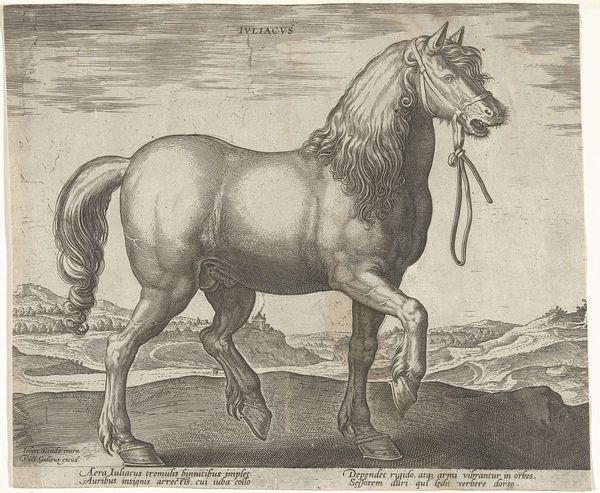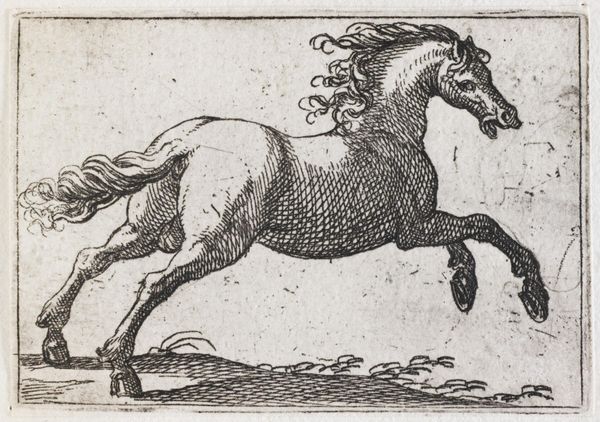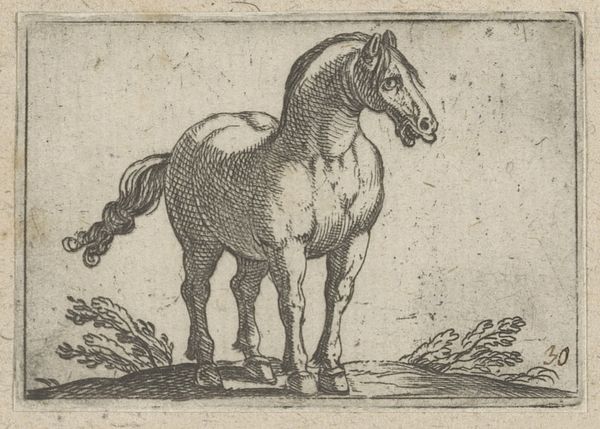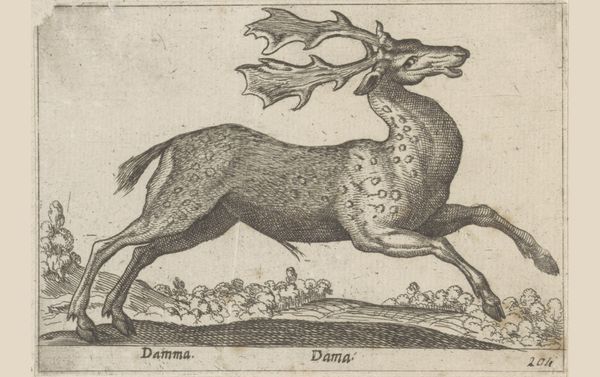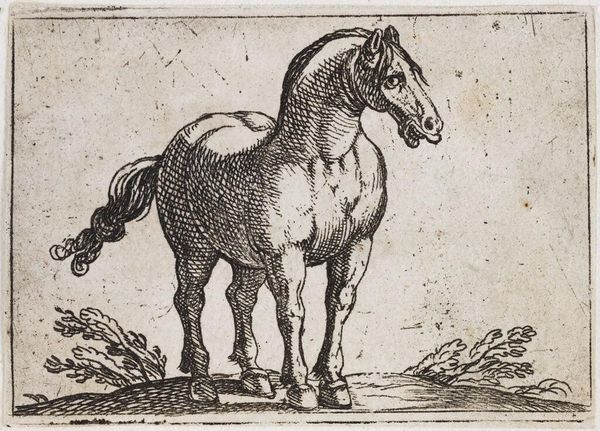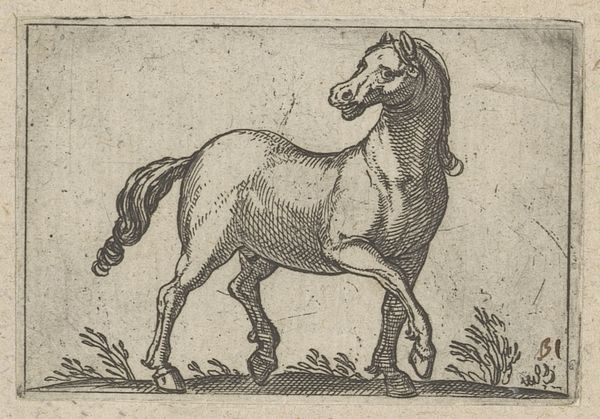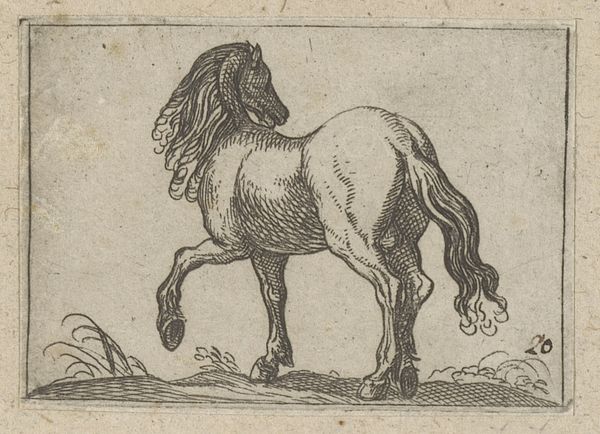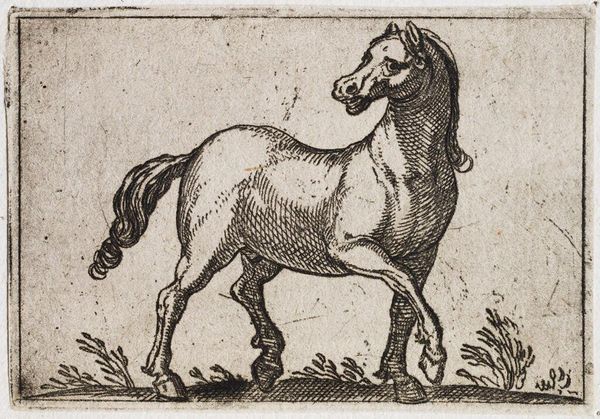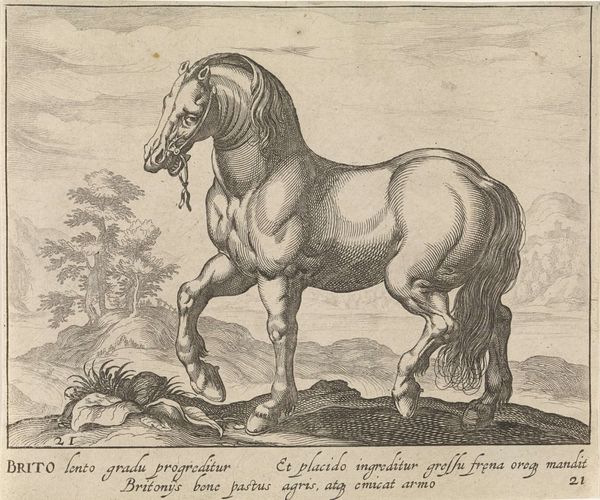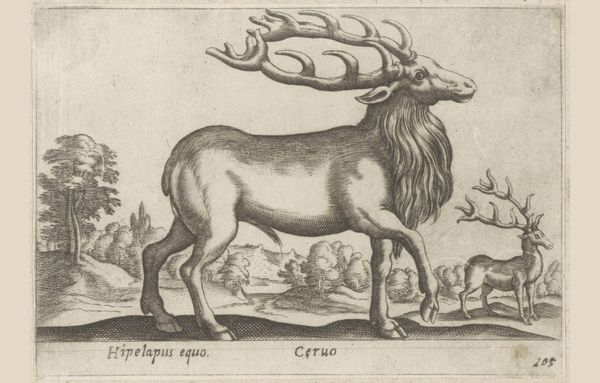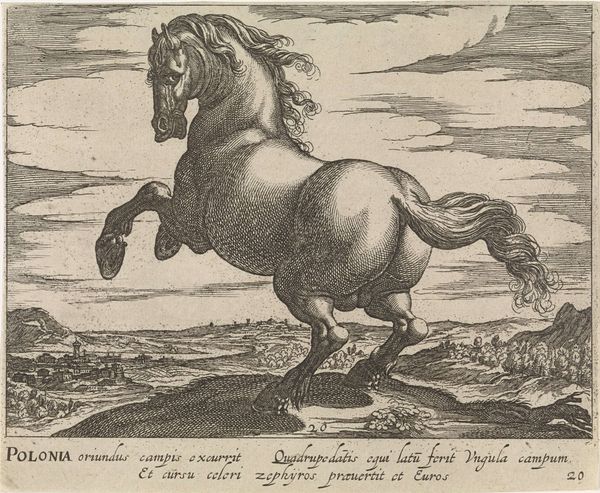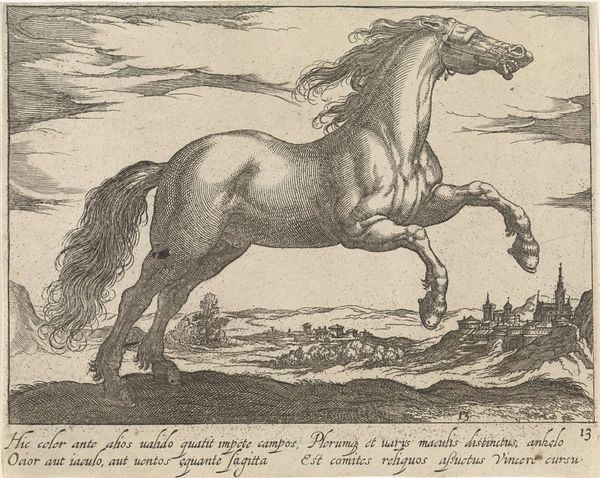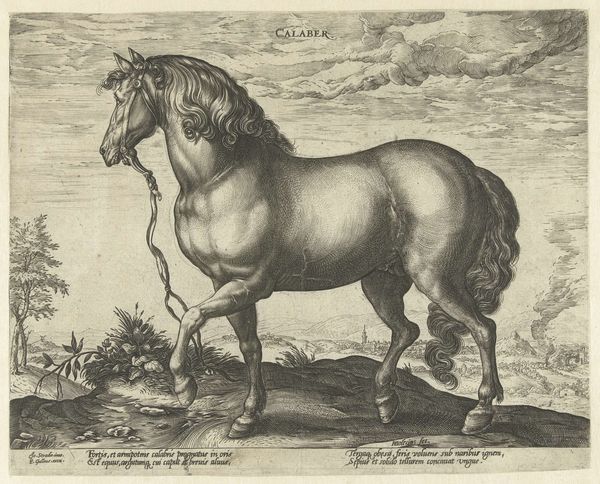
drawing, print, pen, engraving
#
drawing
#
baroque
# print
#
landscape
#
figuration
#
pen-ink sketch
#
line
#
pen
#
engraving
Dimensions: height 95 mm, width 137 mm
Copyright: Rijks Museum: Open Domain
Curator: This intricate print, simply titled "Hert," was created by Antonio Tempesta sometime before 1650 and is currently housed here at the Rijksmuseum. Editor: It's striking, this image—almost fantastical. The exaggerated musculature of the animal and the way its form fills the space feels both powerful and a little unsettling. There's a clear tension in the composition. Curator: Indeed. Consider the animal itself. Here "hert" translates directly to "deer" or more specifically a reindeer and represented below is its visual transformation as a figure of myth and commerce, its hide, meat, and antlers becoming desirable commodities, its very existence reshaped by the emergent markets of the time. Editor: I am interested to consider that, given it's a print, there was likely an element of mass production and distribution. The material itself – paper, ink – made it accessible, bringing images of nature and these strange, wondrous animals to a wider audience. Think of the work hours it would have taken to etch that level of detail into a plate for printing, making it a detailed engraving. Curator: Absolutely, and observe how the image resonates with earlier bestiaries and heraldic traditions. It suggests the animal holds symbolic significance—perhaps alluding to endurance, agility, or even regal authority—qualities long associated with animals. Its exaggerated form could even represent a moral quality or embody a specific cultural value, echoing in visual narratives familiar to viewers of the time. Editor: This almost certainly speaks to an elite patronage. Did this print become affordable or serve as decor and accessible knowledge of wildlife or heraldry to only certain members of Dutch society? Curator: These questions are integral to the reception history of "Hert", what was it originally? A scientific illustration, decorative artwork or an allegorical emblem. It is through prints like these that viewers would formulate their ideas and beliefs about the animal kingdom as symbols as well as realities, informing human identity in relation to our broader world. Editor: Thinking about the labor and the layers embedded within these materials, these artworks become precious and powerful to share new narratives with new cultural weight across new places. Curator: Exactly. When we analyze prints, we explore not just their inherent beauty, but their lasting power of our visual memory. Editor: I think considering process, use, labor, and historical and political narratives provides an enriching way to understand artworks in our everyday culture.
Comments
No comments
Be the first to comment and join the conversation on the ultimate creative platform.
